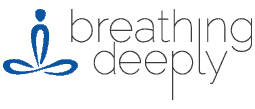Listen in as Brandt discusses first steps in dealing with back conditions such as sciatica, spinal stenosis, spondylolisthesis.
TRANSCRIPTION:
I’ve gotten a bunch of different people asking what to do about different kinds of back or shoulder pain clients, but the one common theme is, for me anyway, is that we should really know what not to do. If you know what not to do, you can work backwards from there. So we have a lot of back education including in the 800 hour, we deal with that. We just did that last module and the one before. But the main thing is, what I’ve seen, online and then some people are referencing me like, “Oh, my client had sciatica,” or “my client had this or that” and, “I saw these exercises online that are good.” Let’s say, you know, “My client had sciatica and I gave him these exercises that were good for sciatica,” or, “My client had a spinal stenosis and I gave him these exercises,” or, “My client that spondylosis and I gave him these exercises.” A lot of the times, those exercises you find are wrong, and I can’t really tell you why other than, you know, free speech is powerful, and people can say whatever they want.
But just a couple of basics, especially for people in the Foundation’s program who are just getting going. It’s important, you know, to get…the best thing is to always get a diagnosis, which you can’t do, but a doctor can, a specialist, not a PCP. And that usually comes with pictures, like an MRI, and those are really useful and probably one of the top three awesome contributions of Western medicine is being able to take pictures of things and see what they look like. And the reason you want…you don’t have to be able to read the pictures, but you want a diagnosis like, “Oh, we see a bunch of bulging discs,” or, “Oh, we see spondylolisthesis, which is basically a slipping of a vertebra,” or, “We see spinal stenosis, which is like a narrowing of the canal, so it squishes the nerve.” Because each one of those comes with contraindications or things that’ll likely make the problem worse. So an example of that is, if you have bulging disks, you generally don’t want to do anything that involves forward bending, and that also includes twists because most people forward bend a little when they twist unless they’re very body aware.
So you want to be careful with those versus in spondylolisthesis… That word is a bit very difficult for me and they should have named it something else. But it basically means one vertebra…I’m trying to give you a good picture…is slipping, usually forward, over the other. So your vertebrae is stacking, you’ve got one slipping. And in that case, forward bending would be better for it, but you don’t want to bend back. And sometimes, they come together, so you’ll have both of those conditions at the same time. So if you get a client and you don’t know what the problem is and they have some sort of radiating back pain like nerve pain down their leg or, you know, spreading all around, and you’re not sure what to do, you say, “Oh, this would be better if you had a diagnosis.” But you want to do something, I mean, generally, the best thing to teach people, right, in a pinch, is how to extend their spine, like their spine gets longer, and how to do it in a neutral position, without their forward bending or back bending, so that’s where you would start.
So you would look for postural problems. Usually, people come in, they say, “Oh, you know, I have a, you know, thing in my back” and they’re not sitting up straight and they’re not extending, and they probably have a lot of weak muscles. You know, if they’re acute like that, you can’t just muscle tests and be like, “Oh, your hip flexors are weak,” etc., etc. You have to kind of stabilize them in a neutral position first, so that’s what you would do. And then, you would sorta wait to figure out whether you need them to go forward or back. But most likely, in any big back pain scenario, at least in the beginning, either bending forward or back is gonna be contraindicated. So if don’t know which way is, you have to be very mindful. If you want to do no harm, think about neutral. So tadasana neutral, side plank, that’s a little dicier, but if the person’s in better shape, you know, their spine is still neutral, you can do exercises seating on a chair, sitting on a chair in neutral. But if you lie them on the ground, for instance, and they’re in a backbend, and you have a condition where that’s contraindicated, you’re gonna make their symptoms worse. I think there’s same, but the opposite, so if you’re pulling their knees into their chest, you think, “Oh, this is great. I’ll just roll their spine on the ground in apanasana,” or whatever, the problem is that you’re doing constant flexing, constant forward bending of that spine, and if they have disc problems, for instance, you’re making them worse or you’re likely to make them worse. But you can’t just go online and be like, “Oh, I found you 10 cool exercises for spinal stenosis.” Just five minutes before I logged on here, I just did a quick tour of those things and I immediately found many movements that make no sense, many movements that, I would say, are contraindicated for that condition.


